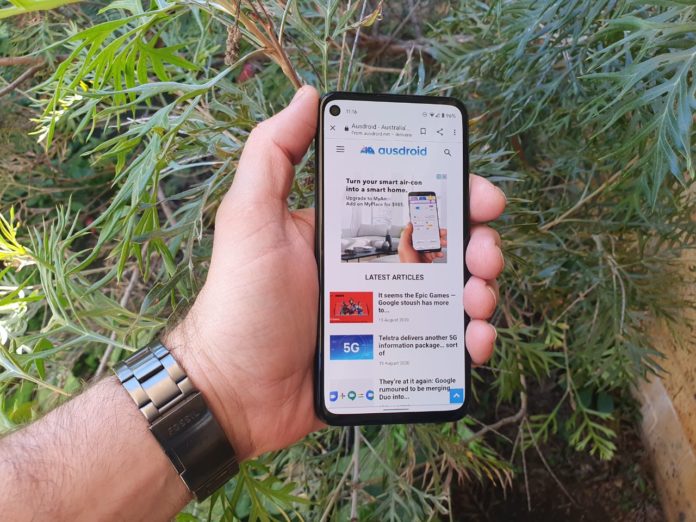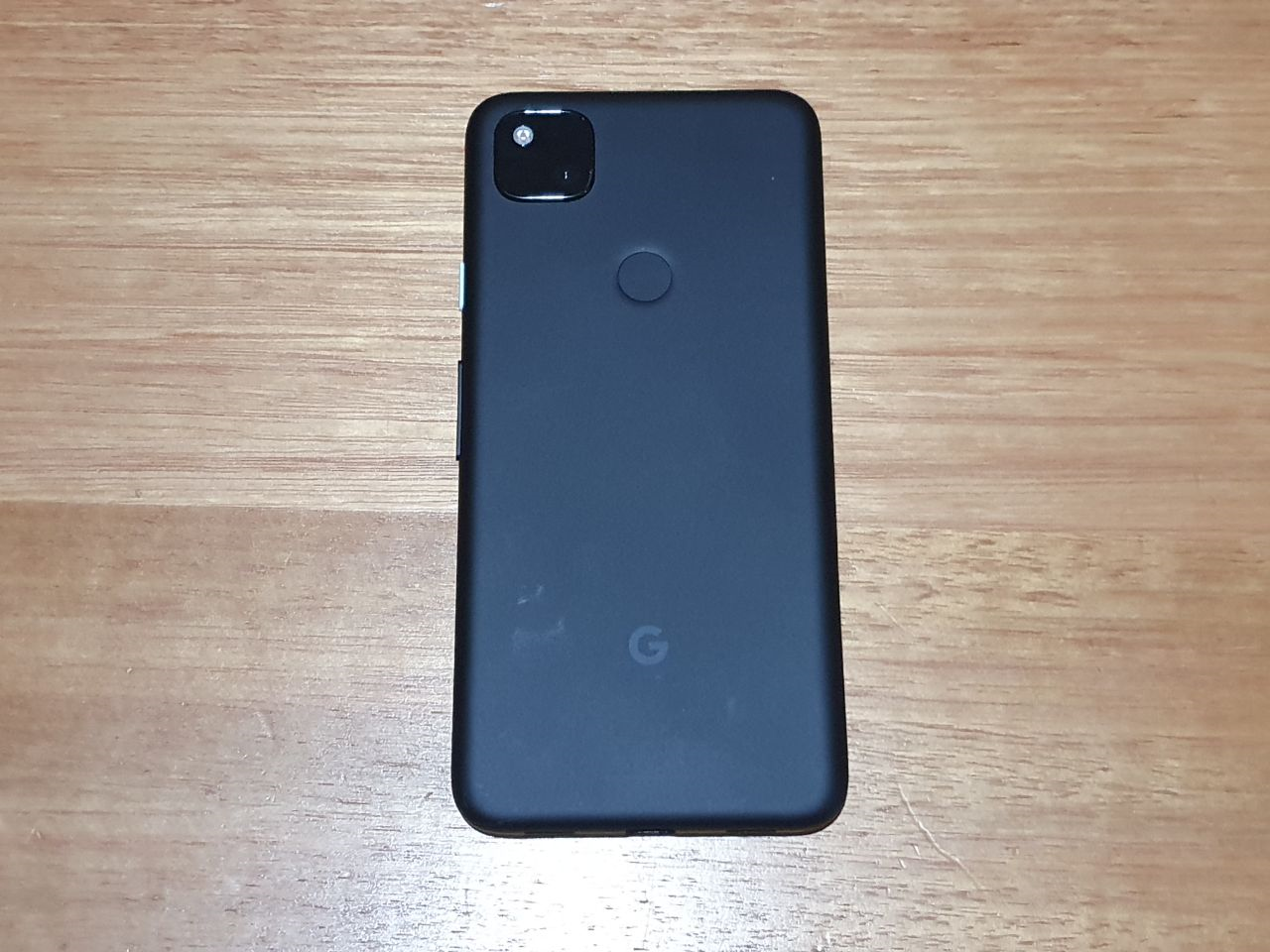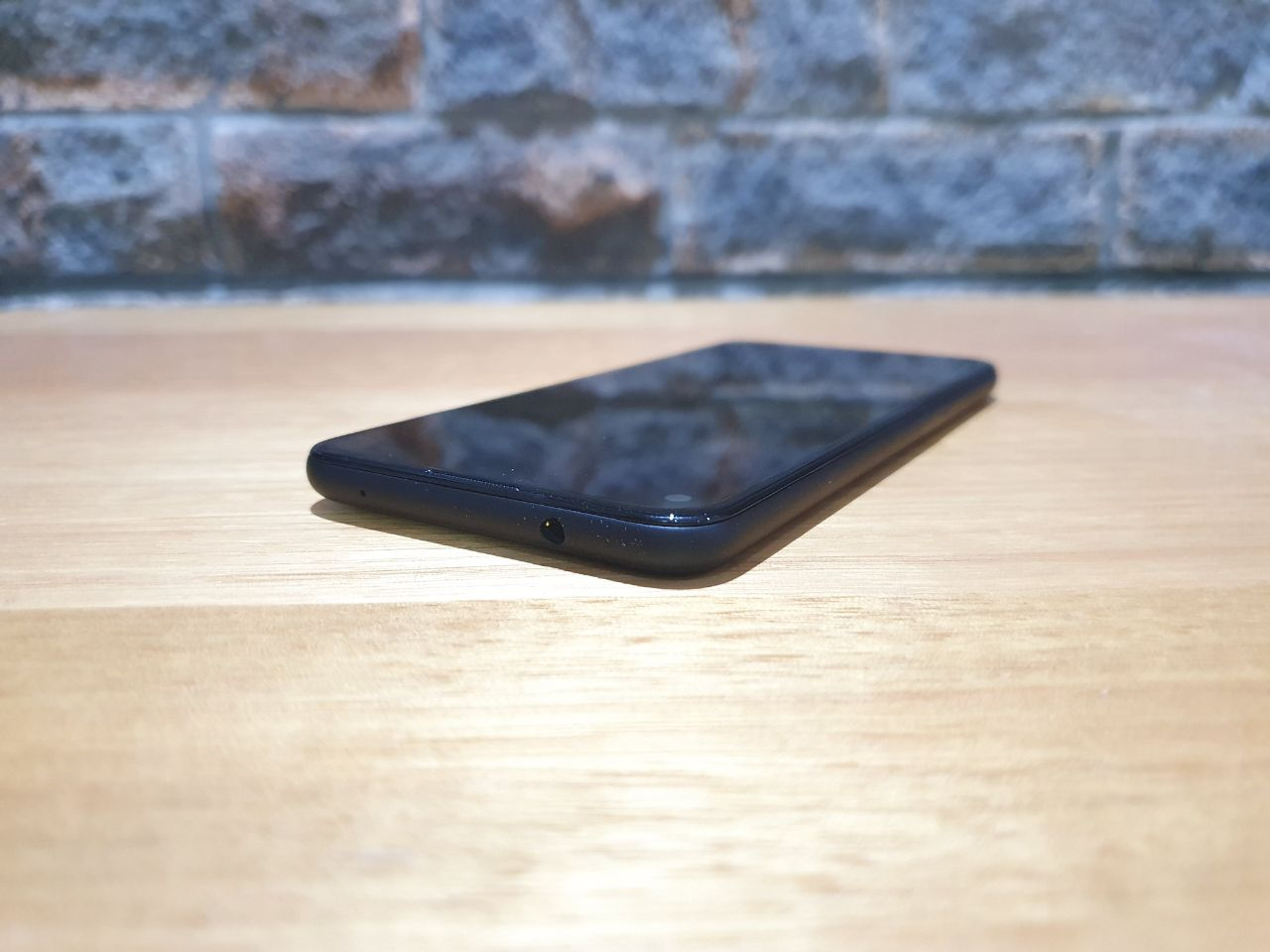What do you truly need in a modern smartphone in 2020? What are the essential features, components and designs that define good enough? The Pixel 4a sets out to answer that question and perhaps offer a glimpse into a future where the mid-range is the standard.
Pre-2019 and the launch of the Pixel 3a there were often compromises, usually the camera, in mid-tier devices. When Google launched the Pixel 3a (and XL) devices, they redefined what was possible for the mid-tier device.
In 2020 they’re back with a Pixel 4a device, and they haven’t come unprepared. The Pixel 4a brings the same approach to affordable hardware with a genuine generational step forward.
So does the Pixel 4a deliver the no compromised mid-tier device that everyone wants? Should you throw out your $2000 Ultra Premium device and enter the affordable phone race? Read on to find out.
WHAT’S INSIDE?
Let’s be clear, the Pixel 4a is not trying to be an OG OnePlus device, pretending to be top tier in every way but at a lower price point. No, the 4a is intentionally an affordable device with decisions made to lower the cost while achieving a high standard of usability.
These sort of devices naturally have compromises, but compromises depend on your reference point. If you compare the $599 Pixel 4a to the $1849 Galaxy Note 20 Ultra, it’s going to fall a long way short; it’s less than ⅓ the price, but far better than ⅓ the phone.
So, with compromises expected, what is in the Pixel 4a? The Pixel 4a comes in only one size: a 5.81-inch rounded edge hole punch AMOLED FHD flat display is seamlessly embedded into the polycarbonate unibody design.
I have to say I love the very light hand feel and flat display (I’m sick of wrap-around screens, I just don’t fund them useful). The 4a includes a rear fingerprint sensor, USB-C charging, a 3.5MM headphone jack, single pixel sense rear camera. In short, it has everything a phone needs.
Powering the Pixel 4a is the new line of 7 series Snapdragon SOC, precisely the Snapdragon 730G, paired with 6GB of RAM and 128GB of internal storage. All of this is powered by a 3,140 mAh battery that gives a surprisingly long life.
Here are the full specs:
| Pixel 4a | |
|---|---|
| Display | 5.81 – inch FHD+ (2340 x 1080) OLED 443 ppi |
| SOC | Snapdragon 730G 2.2 GHz + 1.8 GHz |
| RAM | 6GB |
| Internal Storage | 128 GB |
| SD Card | No |
| Rear Camera | 12.2 MP, f/1.7 |
| Front Camera | 8MP, f/2.0 |
| Battery | 3140mAh |
| Charging | 18W fast charging via USB C |
| Fingprint Sensor | Rear mounted |
| Speakers | Stereo |
| Headphone jack | yes |
| NFC | Yes |
| Wireless | Bluetooth 5.0 WiFi 802.11 a/b/g/n/ac |
| GPS | GPS, GLONASS, Galileo, QZSS, Bei Dou |
| Colour | Just Black |
| Android | 10 |
| Dimensions | 144 x 69.4 x 8.2 mm |
| Weight | 143 g |
So, if that is what it’s got, what is it missing? Again that depends on your point of view, and something I honestly struggled with. What do I want to see that it doesn’t have? That’s easy, Qi wireless charging, an ultra-wide-angle lens and a telephoto lens, oh and an XL variant.
With just those “couple of additions” I have likely increased the cost, increased the complexity and probably destroyed the very fabric of what the Pixel 4a is trying to be. I could (and do) argue that withholding Qi charging is an intentional decision to make the more expensive devices more appealing, but everything else would 100% increase the cost, significantly.
Overall I think Google hit their mark perfectly with the Pixel 4a; it is performant, is missing nothing of real consequence that affects the daily operations of the device, and delivers excellent Android performance at a fraction of the current market costs.
WHAT’S IT GOOD AT?
Everything, the Pixel 4a is good at absolutely everything. I was already embracing the mid-tier of the phone market, having believed for some time now that OEMs were gouging our wallets with overly expensive devices intended to create FOMO if you didn’t have the latest and greatest.
Performance
Qualcomm set out to develop a new tier of processors that offered the essential elements that a smart device would need without some of the more premium features that OEMs love to push. This culminated in the Snapdragon 700 series of processors.
Having used the original Pixel 3a (until I dropped it) and now the Pixel 4a I can say that while the 3a never felt it lacked in performance, I can feel the additional headroom in the Snapdragon 730G.
In my early hands-on, I reported that the only slow down I experienced was with the Harry Potter: Wizards Unite game, turns out that was because I had not yet downloaded the local assets. Once I had downloaded the assets the Pixel 4a performed just as well as any of my higher-end devices.
Did I experience system lag or stutters? Honestly, no. Did I experience slow to open apps? Yep, but these are the same apps that I find painfully slow to load in the first place, calling out you Google Home and Google Pay.
Paired with 6GB of RAM, the Snapdragon 730G is more than adequate for my usage. How the Pixel 4a stands the test of time, how the performance will be in 3 years, I can’t say. However, right now, I honestly just don’t need anything more.
Camera
The Pixel line was born of excellent photography skills; in fact, it was the defining character of the Pixel 1, where Google’s latest hardware journey all began. The camera performance in the Pixel 4a draws a direct line to that lineage.
Google has focused all of its energy into computational photography, rather than the cameras on their device. For a mid-tier device like the Pixel 4a, that means you’re getting the same excellent performance of the top tier Pixel because all of the magic is in software, and the 4a got it all.
Yes, this is the same camera hardware they have been using for ages. I don’t care the Pixel 4a’s single-lens performance holds it’s own against any other single lens. Old doesn’t mean bad; in fact, it can sometimes mean well optimised.
Point and shoot photography with the Pixel 4a is quick, clear, and I like the way Google handles their image processing. With Google’s software, however, there’s more than simple point and shoot on offer.
Google has packed in some genuinely remarkable photography prowess with the Pixel 4a including; Night Site mode which delivers fantastic still images in poor lighting. Astrophotography has made the journey from Pixel 4 and provides enhanced computational photography for taking photos of the stars; unfortunately, I couldn’t get away from light pollution enough to test it properly.
Super Res Zoom is also here and is Google’s mostly successful attempt to provide 7x zoom with only a single lens. Overall the performance is better than the traditional ‘digital zoom’, but in my opinion, it is not as good as a dedicated lens. This is the benefit of computational photography, the Pixel 4a gets 75% of a zoom lens for free and in a mid-tier device that’s great.
The Pixel line set the bar for single-lens photography, and the Pixel 4a continues that legacy. Yes, some of the ultra-premium devices with five cameras provide a better range of focus options, specifically for wide and telephoto needs.
However, the Pixel 4a is not trying to be that kind of device, and at this price point, we’re going to say that’s ok. I defy you to find another smartphone that can match the photography skills of the Pixel 4a at this price point.
Battery Life
Yes, that’s right, a Pixel phone has managed to get battery life into the “good section” of a review, especially a smaller device. It’s true that traditionally the smaller Pixels have had less than stellar battery performance: not so with the Pixel 4a.
The Pixel 4a is a true all-day phone, take it off charge at 5 am, drop it back at 10 pm, and you’ll still have spare battery. On my heaviest day, I used about 4 hours of screen time, and still had about 20% remaining.
Most days I would go to bed with 50% left, and the battery life gauge indicating it would last until 4pm the following day. We all know that battery life drops off over time, with the performance of the Pixel 4a you can afford to lose some battery longevity and still have a useful device.
Updates
Android, in general, is marred by inconstant OS and security updates. Google has tried to address this with both the Pixel line of devices and the Android One and Go ecosystems.
With the Pixel 4a, Google has promised three years of Platform (OS) and three years of security updates. This is fantastic and honestly is something we would like to see more of if Google wants Android to compete against Apple devices equally.
What we would genuinely want to see from Google is this as a minimum update guarantee, but to see them support devices well beyond that date. This would be a game-changer for Android and a real differentiator for Google hardware.
| Phone | No guaranteed Android version updates after | No guaranteed security updates after | No guaranteed telephone or online support after |
|---|---|---|---|
| Pixel 4a | August 2023 | August 2023 | August 2023 |
WHAT’S IT LESS GOOD AT?
More and more, we are finding it harder to call out a feature that needs improvement, and that’s a good thing. Some people may argue that the Pixel 4a is ‘missing something’, but I would argue they are choices, not something missing.
The Pixel 4a is missing nothing that affects the daily usability of the device. Google has made decisions like only creating one size, or not including wireless charging but on the whole, that doesn’t affect the actual performance of the phone.
When I unboxed the Pixel 4a I was immediately sure it was too small, I was coming from a pair of phones in the 6.5-inch range, and the Pixel 4a felt diminutive. Now I’m used to it; it doesn’t feel too small; in fact, the smaller size makes it easier to use one-handed.
Would I choose to pay extra for an XL version? 100% yes, with my aging eyes and the fact I just like the bigger phone I would make that choice. I do wish Google still offered two phone sizes and the choice of a smaller phone size it just may cost them sales to those who want the bigger form factor at a lower price.
CONCLUSION
The Pixel 4a is the second generation affordable device from Google, and they have delivered a device that is overall more refined and improved in every way. The Pixel 4a simultaneously sets a high bar for the upper mid-tier while calling into question the need to pay any more for your phone.
The Pixel 4a has launched onto the market with little fanfare, a modest price and smaller stature. However, the device has the potential to make a significant impact on the Android landscape.
While the device may never reach the top of the Android sales charts, that doesn’t feel like Google’s game here. The Pixel 4a is a warning shot and an olive branch.
To OEMs it is a warning, lift your game in the mid-tier, or over time we will absorb that market. Despite the dominance of the flagship in conversation; they are by far the minority of devices sold.
To consumers, the Pixel 4a is an olive branch, a device many consumers can afford that provides the best of Android OS alongside hardware that leaves out nothing that you need. As far as I am concerned, there are very few people who need more than the Pixel 4a can deliver, you may want it, lust after more even, but I’d argue that’s just FOMO.
Should you buy the Pixel 4a. Yes, I unreservedly recommend the Pixel 4a. If you can afford $599 on a phone, and we know there are some for whom that is still an unjustifiably high price, then the Pixel 4a will be the best phone bar none that is retailed in Australia. The 4a will come with both Australian Consumer protection and Google’s guaranteed updates.
I would also challenge every consumer spending more than $599 why they need to. It’s ok to want the latest and greatest. Not everyone drives a Kia, or Hyundai. Some people want the BMW, just know that’s the choice you’re making if you’re buying the more premium devices.
Yes, I would like three cameras, a larger screen and Qi charging. I may even pay for a device that has those features. But in my heart I will know I bought more than I need, and that may even make me appreciate it more.
There is one odd consideration with the Pixel 4a, and that’s the fact the Google has already announced a second SKU is coming later this year, the Pixel 4a 5G. With little details known except that it will cost $200 more at $799.
![]()
If you care about 5G then perhaps it’s worth waiting for. If you would be happy to pay a fair bit extra if Google sneaks an additional feature in, then it may be worth waiting for. Otherwise, we see little reason not to pull the trigger on the current Pixel 4a.
The Pixel 4a goes on sale in Australia online from 10 September at the Google Store, JB Hi-Fi, Harvey Norman and Vodafone and will be available in-store from mid-October.


















Not really in the same price range, but how does it compare to something like the Nokia 5.3? It’s available for around 1/3 the price, is it more than 1/3 as good?
Great review. thanks. I’d like to know if the 4a delivered into Aust will come with both a SIM slot and eSim (ie: Dual SIM support). It seems unclear on Google specs depending on a J or N model. And then are the Telco going to support the 4a eSim?
THe model I have, that includes an Australian power pack has eSim functionality. Traditionally Google has provided us with Australian Stock so I am going with good chance it will
Sounds like a great daily driver. Pity it I can’t see it on the Optus website. Come to think of it, Optus has a very poor range of products considering they are not giving it away for free now.
From out information it will be retial and Vodafone. May people now buy outright, or put it on a store interest free plan.
I’d like to hold one before making a final decision. The screen size is the only thing stopping me from ordering one right now to replace my Pixel 2 XL. So I’ll wait to see what the screen size is on the 4a 5G before making a decision, noting that 5G is of zero interest to me based on the fact that here I live and work will be unlikely to see a 5G cell tower in the next two years.
I have to say Adam, my inital comments when I held it were not positive re size. it was amazing how quickly I did adapt…. but is that adapting a compromise? Wise to wait to hold it.
Great review as always and wholeheartedly agree with the conclusion. If you want a new phone around the ~$600 mark just get the 4a. A couple of little annoyances for me though is that Google left out WiFi 6 which the 730G is capable of, most likely to it requiring a different antenna design etc…and I would have loved it to be a little bit bigger, same goes for the battery. Also on the 5G variant, I’d expect to see a faster SoC such as the 765G or 768G since it’ll be supporting 5G. I don’t believe you can pair… Read more »
The single size is certainly a shame from my perspective. My eyes are not what they once were. However for 5.81-inch the battery was more than enough so no worries there. It will be interesting to see the specs of the 5G variant… we have asked…. Google isn’t telling!!